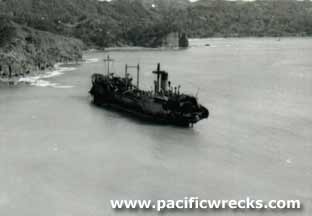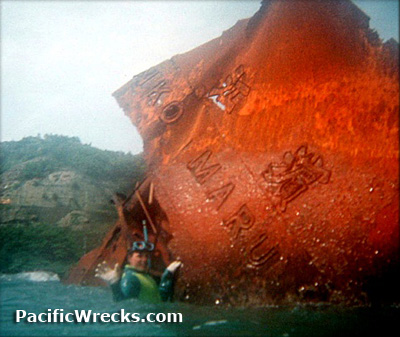|
|
|
|
| Missing In Action (MIA) | Prisoners Of War (POW) | Unexploded Ordnance (UXO) |
| Chronology | Locations | Aircraft | Ships | Submit Info | How You Can Help | Donate |
|
| IJN Cargo  George Pierce, Jr 1951  Dan King 1992 |
Wartime History On June 11, 1944 departed Tanapag Harbor on Saipan as part of a convoy bound for Japan and was attacked by , U.S. Navy (USN) Task Force 58 (TF-58) carrier aircraft from fifteen aircraft carriers that targeted the convoy. During the attacks, Hinko Maru was severely damaged from the explosion of an aerial torpedo. Shipwreck On June 12, 1944 the damaged ship was deliberately beached bow first in Chi Chi Jima Harbor on the western coast of Chi Chi Jima. Afterwards, U.S. aircraft often strafed the shipwreck to expend their ammunition when returning from missions. Postwar, the shipwreck remained largely intact. By the 1990s, the shipwreck had broken up with the bow section only above water. Roy Wiggs recalls: Bill Marks recalls from 1952: Frank Mulhall recalls: George Pierce, Jr visited the in 1951 and recalls: Contribute
Information |
Map 1970 |
| Discussion Forum | Daily Updates | Reviews | Museums | Interviews & Oral Histories |
|